Implementation of a Hybrid Intelligence System Enabling the Effectiveness Assessment of Interaction Channels Use in HMI
Abstract
1. Introduction
2. Materials and Methods
- AI system, with a predefined fact database containing topics within an expert knowledge domain;
- The ability to extend/supplement the system’s knowledge by adding new facts and relations;
- A human-in-loop expert assistance for the approval of new knowledge and for emergency situations.
2.1. Hybrid Intelligence System (HINT) Architecture
2.2. Dual Sensor Component: Interaction Quality Sensor Merged with User Experience Sensor
- If a trainee is stuck in a given stage and decides to try a different information channel, which is visualized in the Hanoi Tower as the same width of disks (the tower does not narrow up, the subsequent disk is of the same width, which represents a repetition of the stage);
- The work performance at a given stage performed by a given trainee is acquired by the proposed IQS and these data increase the knowledge base about the trainees’ performance per stage;
- The best-performing channel is considered for pre-selection as the default one for future users.
- The diameters of the rings placed on the tower are adjusted to the number of stages in the analyzed process;
- The largest diameter ring corresponds to the first stage of the process, with rings gradually decreasing in size with each subsequent stage;
- The height of each ring represents the duration of execution of each stage of the process;
- The colors of the rings represent the particular chosen information channel, such as text, images, videos, or consultation with an expert.
2.3. Vision System as an Additional Detector of Process Anomalies
2.4. Adaptive Information Channel Customization Module Based on the “Hanoi Towers” Concept
2.5. User Interaction Adaptive Model Implementation
- Text-based information (description);
- Speech (TTS synthesized speech audio);
- Images (visual guide with photos or diagrams);
- Videos (mostly available only for stages that are difficult to explain);
- Video call to the senior staff or process supervisor (VOIP audio connection with the additional top-view camera of the workbench).
3. Results
3.1. Use Case 1—HINT as a Window Assembly Assistant
3.2. Use Case 2—HINT with a Window Assembly Co-Bot
3.3. Analysis of the Learning Process Using HINT
4. Discussion
4.1. HINT’s Placement in the Kaleidoscope of Robotics’ Future
4.2. Safety of the System (Human and Robots Cooperation)
4.3. The Co-Bots’ Future and the Road Map to Industry 5.0
5. Conclusions
6. Future Work
Author Contributions
Funding
Institutional Review Board Statement
Informed Consent Statement
Data Availability Statement
Conflicts of Interest
References
- Paschek, D.; Mocan, A.; Draghici, A. Industry 5.0–The expected impact of next industrial revolution. In Proceedings of the Thriving on Future Education, Industry, Business, and Society, Proceedings of the MakeLearn and TIIM International Conference, Piran, Slovenia, 15–17 May 2019; pp. 15–17. [Google Scholar]
- Maddikunta, P.K.R.; Pham, Q.V.; Prabadevi, B.; Deepa, N.; Dev, K.; Gadekallu, T.R.; Ruby, R.; Liyanage, M. Industry 5.0: A survey on enabling technologies and potential applications. J. Ind. Inf. Integr. 2022, 26, 100257. [Google Scholar] [CrossRef]
- Wu, W.Y.; Chiag, C.Y.; Wu, Y.J.; Tu, H.J. The influencing factors of commitment and business integration on supply chain management. Ind. Manag. Data Syst. 2004, 104, 322–333. [Google Scholar] [CrossRef]
- Rut, J.; Kulińska, E. Optimization of the material and information streams flow in the manufacturing company. Mark. Rynek 2017, 7, 616–624. [Google Scholar]
- Gurcan, F.; Cagiltay, N.E.; Cagiltay, K. Mapping human–computer interaction research themes and trends from its existence to today: A topic modeling–based review of past 60 years. Int. J. Hum.-Interact. 2021, 37, 267–280. [Google Scholar] [CrossRef]
- Grudin, J. Anticipating the future of HCI by understanding its past and present. In Proceedings of the Extended Abstracts of the 2019 CHI Conference on Human Factors in Computing Systems, Glasgow Scotland, UK, 4–9 May 2019; pp. 1–4. [Google Scholar]
- Khoma, V.; Khoma, Y.; Brydinskyi, V.; Konovalov, A. Development of Supervised Speaker Diarization System Based on the PyAnnote Audio Processing Library. Sensors 2023, 23, 2082. [Google Scholar] [CrossRef]
- Danilevsky, M.; Qian, K.; Aharonov, R.; Katsis, Y.; Kawas, B.; Sen, P. A survey of the state of explainable AI for natural language processing. arXiv 2020, arXiv:2010.00711. [Google Scholar]
- Zhang, P.; Li, N.; Scialdone, M.J.; Carey, J.M. The Intellectual Advancement of Human–Computer Interaction Research: A Critical Assessment of the MIS Literature (1990–2008). AIS Trans. Hum.-Comput. Interact. 2009, 1, 55–107. [Google Scholar] [CrossRef]
- Yun, Y.; Ma, D.; Yang, M. Human–computer interaction–based decision support system with applications in data mining. Future Gener. Comput. Syst. 2021, 114, 285–289. [Google Scholar] [CrossRef]
- Arrieta, A.B.; Díaz-Rodríguez, N.; Del Ser, J.; Bennetot, A.; Tabik, S.; Barbado, A.; García, S.; Gil-López, S.; Molina, D.; Benjamins, R.; et al. Explainable Artificial Intelligence (XAI): Concepts, taxonomies, opportunities and challenges toward responsible AI. Inf. Fusion 2020, 58, 82–115. [Google Scholar] [CrossRef]
- Neville, S.J. Eavesmining: A critical audit of the Amazon Echo and Alexa conditions of use. Surveill. Soc. 2020, 18, 343–356. [Google Scholar] [CrossRef]
- Gao, Y.; Pan, Z.; Wang, H.; Chen, G. Alexa, my love: Analyzing reviews of amazon echo. In Proceedings of the 2018 IEEE SmartWorld, Ubiquitous Intelligence & Computing, Advanced & Trusted Computing, Scalable Computing & Communications, Cloud & Big Data Computing, Internet of People and Smart City Innovation (SmartWorld/SCALCOM/UIC/ATC/CBDCom/IOP/SCI), Guangzhou, China, 8–12 October 2018; pp. 372–380. [Google Scholar]
- Major, D.; Huang, D.Y.; Chetty, M.; Feamster, N. Alexa, who am I speaking to?: Understanding users’ ability to identify third–party apps on amazon Alexa. ACM Trans. Internet Technol. (TOIT) 2021, 22, 1–22. [Google Scholar] [CrossRef]
- Larsonneur, C. Smart and/or diverse: The paradoxes of machine processed language. Hybrid. Revue Arts et Médiations Hum. 2021. [Google Scholar] [CrossRef]
- Lardinois, F. Google Launches an Improved Speech–to–Text Service for Developers. Available online: https://techcrunch.com/2018/04/09/google-launches-an-improved-speech-to-text-service-for-developers (accessed on 26 November 2022).
- Ożarowska, I. Google Cloud Speech–to–Text—What Is It, and How to Use It. Available online: https://fotc.com/blog/speech-to-text-what-is (accessed on 26 November 2022).
- Dale, R. The return of the chatbots. Nat. Lang. Eng. 2016, 22, 811–817. [Google Scholar] [CrossRef]
- Hoy, M.B. Alexa, Siri, Cortana, and more: An introduction to voice assistants. Med Ref. Serv. Q. 2018, 37, 81–88. [Google Scholar] [CrossRef]
- Li, B.; Sainath, T.N.; Narayanan, A.; Caroselli, J.; Bacchiani, M.; Misra, A.; Shafran, I.; Sak, H.; Pundak, G.; Chin, K.K.; et al. Acoustic Modeling for Google Home. In Proceedings of the Interspeech, Stockholm, Sweden, 20–24 August 2017; pp. 399–403. [Google Scholar]
- Gupta, M.P. Google assistant controlled home automation. Int. Res. J. Eng. Technol. 2018, 5, 2074–2077. [Google Scholar]
- Peng, C.Y.; Chen, R.C. Voice recognition by Google Home and Raspberry Pi for smart socket control. In Proceedings of the 2018 Tenth International Conference on Advanced Computational Intelligence (ICACI), Xiamen, China, 29–31 March 2018; pp. 324–329. [Google Scholar]
- Garn, B.; Schreiber, D.P.; Simos, D.E.; Kuhn, R.; Voas, J.; Kacker, R. Combinatorial methods for testing internet of things smart home systems. Softw. Test. Verif. Reliab. 2022, 32, e1805. [Google Scholar] [CrossRef]
- Zhang, N.; Mi, X.; Feng, X.; Wang, X.; Tian, Y.; Qian, F. Understanding and mitigating the security risks of voice–controlled third–party skills on amazon alexa and google home. arXiv 2018, arXiv:1805.01525. [Google Scholar]
- Cohn, M.; Segedin, B.F.; Zellou, G. Acoustic–phonetic properties of Siri–and human–directed speech. J. Phon. 2022, 90, 101123. [Google Scholar] [CrossRef]
- Kepuska, V.; Bohouta, G. Next–generation of virtual personal assistants (microsoft cortana, apple siri, amazon alexa and google home). In Proceedings of the 2018 IEEE 8th Annual Computing and Communication Workshop and Conference (CCWC), Las Vegas, NV, USA, 8–10 January 2018; pp. 99–103. [Google Scholar]
- Kim, D.; Kim, S.H.; Kim, T.; Kang, B.B.; Lee, M.; Park, W.; Ku, S.; Kim, D.; Kwon, J.; Lee, H.; et al. Review of machine learning methods in soft robotics. PLoS ONE 2021, 16, e0246102. [Google Scholar] [CrossRef] [PubMed]
- Azeem, M.; Haleem, A.; Javaid, M. Symbiotic relationship between machine learning and Industry 4.0: A review. J. Ind. Integr. Manag. 2022, 7, 401–433. [Google Scholar] [CrossRef]
- Lins, R.G.; Givigi, S.N. Cooperative robotics and machine learning for smart manufacturing: Platform design and trends within the context of industrial internet of things. IEEE Access 2021, 9, 95444–95455. [Google Scholar] [CrossRef]
- Zhang, J.; Tao, D. Empowering Things with Intelligence: A Survey of the Progress, Challenges, and Opportunities in Artificial Intelligence of Things. arXiv 2020, arXiv:2011.08612. [Google Scholar] [CrossRef]
- Jadeja, M.; Varia, N. Perspectives for evaluating conversational AI. arXiv 2017, arXiv:1709.04734. [Google Scholar]
- Cravo, A.C.; Pereira, A.; Pereira, E.d.S. The challenges for knowledge workers in organizations to carry out sustainable organizational development. Rev. E-Tecnol. Para Compet. Ind. 2022, 15, 1–15. [Google Scholar] [CrossRef]
- Zhu, Y.; Wang, D.; Liao, G.; Liu, L.; Chen, Y.; Wang, L.; Yang, H.; Zhan, W.; Tian, Y. Description Strategy Selection in Collaborative Spatial Tasks. In Proceedings of the Man–Machine–Environment System Engineering, Beijing, China, 21–23 October 2022; pp. 427–433. [Google Scholar]
- Russell, N.; van der Aalst, W.M.P.; ter Hofstede, A.H.M.; Edmond, D. Workflow Resource Patterns: Identification, Representation and Tool Support. In Proceedings of the Advanced Information Systems Engineering, Porto, Portugal, 13–17 June 2005; pp. 216–232. [Google Scholar]
- Haase, T.; Keller, A.; Warschewske, F.; Woitag, M.; Sauer, S.; Berndt, D. Digital Assembly Assistance Systems: Methods, Technologies and Implementation Strategies. In Human–Technology Interaction: Shaping the Future of Industrial User Interfaces; Springer International Publishing: Cham, Switzerland, 2023; pp. 15–48. [Google Scholar] [CrossRef]
- Ing, L.Y.; Grossman, G.M. Robots and AI: A New Economic Era; Taylor & Francis: Abingdon, UK, 2022. [Google Scholar]
- Krstic, B. Identity, Image and Reputation as Determinants of Enterprise Competitiveness. Ekon. J. Econ. Theory Pract. Soc. Issues 2013, 59, 26–35. [Google Scholar] [CrossRef]
- Brito, T.; Queiroz, J.; Piardi, L.; Fernandes, L.A.; Lima, J.; Leitão, P. A machine learning approach for collaborative robot smart manufacturing inspection for quality control systems. Procedia Manuf. 2020, 51, 11–18. [Google Scholar] [CrossRef]
- Chen, J.; Mohammed, A.; Alexopoulos, T.; Setchi, R. Collaborative Human–Robot Assembly: Methodology, Simulation and Industrial Validation. In Proceedings of the Sustainable Design and Manufacturing, Split, Croatia, 14–16 September 2022; pp. 181–190. [Google Scholar]
- Gan, J.; Liu, L.; Qiao, G.; Zhang, Q. The role of robot adoption in green innovation: Evidence from China. Econ. Model. 2023, 119, 106128. [Google Scholar] [CrossRef]
- Awaworyi Churchill, S.; Inekwe, J.; Ivanovski, K.; Smyth, R. Human capital and energy consumption: Six centuries of evidence from the United Kingdom. Energy Econ. 2023, 117, 106465. [Google Scholar] [CrossRef]
- Buchanan, J.; Kronk, H. The Slow Adjustment in Tech Labor: Why Do High–Paying Tech Jobs Go Unfilled? Cent. Growth Oppor. 2023. [Google Scholar] [CrossRef]
- Skare, M.; de las Mercedes de Obesso, M.; Ribeiro-Navarrete, S. Digital transformation and European small and medium enterprises (SMEs): A comparative study using digital economy and society index data. Int. J. Inf. Manag. 2023, 68, 102594. [Google Scholar] [CrossRef]
- Payan-Carreira, R. Developing Critical Thinking in Higher Education: Is There a Reason to Change? In Proceedings of the Technology and Innovation in Learning, Teaching and Education: Third International Conference, TECH–EDU 2022, Lisbon, Portugal, 31 August–2 September 2022; p. 329. [Google Scholar]
- Perez-Encinas, A.; Berbegal-Mirabent, J. Who gets a job sooner? Results from a national survey of master’s graduates. Stud. High. Educ. 2023, 48, 174–188. [Google Scholar] [CrossRef]
- McLaren, J. Globalization and labor market dynamics. Annu. Rev. Econ. 2017, 9, 177–200. [Google Scholar] [CrossRef]
- Rutkowski, J. Rapid Labor Reallocation with a Stagnant Unemployment Pool. The Puzzle of the Labor Market in Lithuania; The Puzzle of the Labor Market in Lithuania, World Bank Policy Research Working Paper; World Bank: Washington, DC, USA, 2003. [Google Scholar]
- Ruiz, I.; Vargas-Silva, C. The labor market impacts of forced migration. Am. Econ. Rev. 2015, 105, 581–586. [Google Scholar] [CrossRef]
- Dominese, G.; Yakubovskiy, S.; Tsevukh, J.; Rodionova, T. Impact of international migration flows on the European union and Ukraine. Transit. Stud. Rev. 2020, 27, 83–98. [Google Scholar]
- Habarta, A. The Migration Crisis in Modern Europe. 2022. Available online: https://papers.ssrn.com/sol3/papers.cfm?abstract_id=4136829 (accessed on 26 November 2022).
- Shimada, A. Foreign worker participation in labor markets and the economy’s welfare. J. Policy Model. 2005, 27, 355–362. [Google Scholar] [CrossRef]
- Gupta, B.B.; Gaurav, A.; Panigrahi, P.K.; Arya, V. Analysis of artificial intelligence–based technologies and approaches on sustainable entrepreneurship. Technol. Forecast. Soc. Chang. 2023, 186, 122152. [Google Scholar] [CrossRef]
- Webster, C.; Ivanov, S. Robotics, artificial intelligence, and the evolving nature of work. In Digital Transformation in Business and Society; Springer: Berlin/Heidelberg, Germany, 2020; pp. 127–143. [Google Scholar]
- Vrontis, D.; Christofi, M.; Pereira, V.; Tarba, S.; Makrides, A.; Trichina, E. Artificial intelligence, robotics, advanced technologies and human resource management: A systematic review. Int. J. Hum. Resour. Manag. 2022, 33, 1237–1266. [Google Scholar] [CrossRef]
- Yawalkar, M.V.V. A Study of Artificial Intelligence and its role in Human Resource Management. Int. J. Res. Anal. Rev. (IJRAR) 2019, 6, 20–24. [Google Scholar]
- Rathi, R. Artificial intelligence and the future of hr practices. Int. J. Appl. Res. 2018, 4, 113–116. [Google Scholar]
- Barboza, C. Artificial Intelligence and HR: The New Wave of Technology. J. Adv. Soc. Sci. Humanit. 2019, 5, 715–720. [Google Scholar]
- Armstrong, M.; Taylor, S. Armstrong’s Handbook of Human Resource Management Practice: A Guide to the Theory and Practice of People Management, 15th ed.; Kogan Page Ltd.: London, UK, 2020; ISBN 978-074-949-827-6. [Google Scholar]
- Nie, P.y.; Yang, Y.C. Innovation and competition with human capital input. Manag. Decis. Econ. 2023, 44, 1779–1785. [Google Scholar] [CrossRef]
- De Felice, S.; Hamilton, A.F.d.C.; Ponari, M.; Vigliocco, G. Learning from others is good, with others is better: The role of social interaction in human acquisition of new knowledge. Philos. Trans. R. Soc. B Biol. Sci. 2023, 378, 20210357. [Google Scholar] [CrossRef]
- Giskeødegård, M.; Kjersem, K.; Jahn, N.; Rost, R. Tool or hassle?—Production workers evaluation of the potential of digital assistance systems on the shopfloor in shipbuilding projects. Cogent Eng. 2023, 10, 2161763. [Google Scholar] [CrossRef]
- Azam, M.S. How can we build human resources (HR) that deliver value? A systematic literature review of traditional and transformational HR roles. Glob. Bus. Organ. Excell. 2023, 42, 81–92. [Google Scholar] [CrossRef]
- Bøgh, S.; Hain, D.S.; Hansen, E.B.; Jensen, S.B.; Tvedebrink, T.; Jurowetzki, R. Predictive Analytics Applications for Small and Medium-Sized Enterprises (SMEs)—A Mini Survey and Real–World Use Cases. In The Future of Smart Production for SMEs: A Methodological and Practical Approach Towards Digitalization in SMEs; Springer International Publishing: Cham, Switzerland, 2023; pp. 263–279. [Google Scholar] [CrossRef]
- Gardecki, A.; Podpora, M.; Beniak, R.; Klin, B.; Pochwała, S. User Experience Sensor for Man–Machine Interaction Modeled as an Analogy to the Tower of Hanoi. Sensors 2020, 20, 4074. [Google Scholar] [CrossRef] [PubMed]
- Wu, S.; Wang, Z.; Shen, B.; Wang, J.H.; Dongdong, L. Human–computer interaction based on machine vision of a smart assembly workbench. Assem. Autom. 2020, 40, 475–482. [Google Scholar] [CrossRef]
- Caiazzo, C.; Nestić, S.; Savković, M. A Systematic Classification of Key Performance Indicators in Human–Robot Collaboration. In Proceedings of the Sustainable Business Management and Digital Transformation: Challenges and Opportunities in the Post–COVID Era, Belgrade, Serbia, 11–14 June 2022; pp. 479–489. [Google Scholar]
- Stenner, A.J.; Bland, J.D.; Hunter, E.L.; Cooper, M.L. The Standardized Growth Expectation: Implications for Education Evaluation. In Explanatory Models, Unit Standards, and Personalized Learning in Educational Measurement: Selected Papers by A. Jackson Stenner; Springer Nature: Singapore, 2023; pp. 1–15. [Google Scholar] [CrossRef]
- Herholz, S.C. Individual Predisposition for Learning and Neuroplasticity. J. Neurosci. 2013, 33, 15321–15323. [Google Scholar] [CrossRef]
- Komaki, J.; Heinzmann, A.T.; Lawson, L. Effect of training and feedback: Component analysis of a behavioral safety program. J. Appl. Psychol. 1980, 65, 261. [Google Scholar] [CrossRef] [PubMed]
- Chakraborty, G.; Kikuchi, D.; Sawamoto, J.; Yokoha, H. Perception delay and its estimation analyzing EEG signal. In Proceedings of the 2013 IEEE International Conference on Cybernetics (CYBCO), Lausanne, Switzerland, 13–15 June 2013; pp. 57–62. [Google Scholar] [CrossRef]
- ISO 10218-1:2011; Robots and Robotic Devices—Safety Requirements for Industrial Robots—Part 1: Robots. ISO: Geneva, Switzerland, 2011.
- Ruijten, P.A.; Cuijpers, R.H. Do not let the robot get too close: Investigating the shape and size of shared interaction space for two people in a conversation. Information 2020, 11, 147. [Google Scholar] [CrossRef]
- Ren, F.; Bao, Y. A review on human–computer interaction and intelligent robots. Int. J. Inf. Technol. Decis. Mak. 2020, 19, 5–47. [Google Scholar] [CrossRef]
- Momsen, K.; Schneider, S.O. Motivated Reasoning, Information Avoidance, and Default Bias; Working Papers in Economics and Statistics; University of Innsbruck: Innsbruck, Austria, 2022; pp. 1–43. ISSN 1993-4378. [Google Scholar]
- Soll, J.B.; Milkman, K.L.; Payne, J.W. A user’s guide to debiasing. Wiley Blackwell Handb. Judgm. Decis. Mak. 2015, 2, 924–951. [Google Scholar]
- Wang, B.; Tao, F.; Fang, X.; Liu, C.; Liu, Y.; Freiheit, T. Smart manufacturing and intelligent manufacturing: A comparative review. Engineering 2021, 7, 738–757. [Google Scholar] [CrossRef]
- Lu, Y.; Zheng, H.; Chand, S.; Xia, W.; Liu, Z.; Xu, X.; Wang, L.; Qin, Z.; Bao, J. Outlook on human–centric manufacturing towards Industry 5.0. J. Manuf. Syst. 2022, 62, 612–627. [Google Scholar] [CrossRef]
- Nahavandi, S. Industry 5.0–A human–centric solution. Sustainability 2019, 11, 4371. [Google Scholar] [CrossRef]
- Miraz, M.H.; Hasan, M.T.; Sumi, F.R.; Sarkar, S.; Hossain, M.A. Industry 5.0: The Integration of Modern Technologies. In Machine Vision for Industry 4.0; CRC Press: Boca Raton, FL, USA, 2022; pp. 285–300. [Google Scholar]
- Zizic, M.C.; Mladineo, M.; Gjeldum, N.; Celent, L. From industry 4.0 towards industry 5.0: A review and analysis of paradigm shift for the people, organization and technology. Energies 2022, 15, 5221. [Google Scholar] [CrossRef]
- Ćoćkalo, D.; Bakator, M.; Đorđević, D.; Vorkapić, M.; Stanisavljev, S. Industry 5.0: A new paradigm in manufacturing. In Proceedings of the 3rd Virtual International Conference Path to a Knowledge Society-Managing Risks and Innovation 2021, Virtual, 15–16 November 2021; Stanković, M., Nikolić, V., Eds.; ComplexSystem Research Center: Belgrade, Serbia, 2021; pp. 245–250. [Google Scholar]
- Xu, X.; Lu, Y.; Vogel-Heuser, B.; Wang, L. Industry 4.0 and Industry 5.0–Inception, conception and perception. J. Manuf. Syst. 2021, 61, 530–535. [Google Scholar] [CrossRef]
- Demir, K.A.; Döven, G.; Sezen, B. Industry 5.0 and human–robot co–working. Procedia Comput. Sci. 2019, 158, 688–695. [Google Scholar] [CrossRef]
- Qian, C.; Zhu, C.; Huang, D.H.; Zhang, S. Examining the influence mechanism of artificial intelligence development on labor income share through numerical simulations. Technol. Forecast. Soc. Chang. 2023, 188, 122315. [Google Scholar] [CrossRef]
- Lillywhite, B.; Wolbring, G. Auditing the impact of artificial intelligence on the ability to have a good life: Using well-being measures as a tool to investigate the views of undergraduate STEM students. AI Soc. 2023, 1, 1–16. [Google Scholar]
- Karwowski, W. International Encyclopedia of Ergonomics and Human Factors—3 Volume Set; CRC Press: Boca Raton, FL, USA, 2006. [Google Scholar]
- Munro, R. The rapid growth of Human–in–the–Loop Machine Learning. In Proceedings of the Workshop on Interactive Adaptive Learning, The European Conference on Machine Learning and Principles and Practice of Knowledge Discovery in Databases, Ghent, Belgium, 14 September 2020. [Google Scholar]
- Mituniewicz, N. Human in the Loop, or This Is How Humans Help Artificial Intelligence… Get Smart. Available online: https://homodigital.pl/human-in-the-loop-hitl-automatyzacja-homodigital (accessed on 26 November 2022). (In Polish).
- Mosqueira-Rey, E.; Hernández-Pereira, E.; Alonso-Ríos, D.; Bobes-Bascarán, J.; Fernández-Leal, Á. Human–in–the–loop machine learning: A state of the art. Artif. Intell. Rev. 2022, 56, 3005–3054. [Google Scholar] [CrossRef]
- Netzer, E.; Geva, A.B. Human–in–the–loop active learning via brain computer interface. Ann. Math. Artif. Intell. 2020, 88, 1191–1205. [Google Scholar] [CrossRef]
- Turner, C.J.; Ma, R.; Chen, J.; Oyekan, J. Human in the Loop: Industry 4.0 technologies and scenarios for worker mediation of automated manufacturing. IEEE Access 2021, 9, 103950–103966. [Google Scholar] [CrossRef]
- ISO 10218-2:2011; Robots and Robotic Devices—Safety Requirements for Industrial Robots—Part 2: Robot Systems and Integration. ISO: Geneva, Switzerland, 2011.
- Safety of Systems with Collaborating Robots Part 1. Available online: https://fugai.pl/bezpieczenstwo-systemow-z-robotami-wspolpracujacymi-cz-1 (accessed on 26 November 2022). (In Polish).
- Hentout, A.; Aouache, M.; Maoudj, A.; Akli, I. Human–robot interaction in industrial collaborative robotics: A literature review of the decade 2008–2017. Adv. Robot. 2019, 33, 764–799. [Google Scholar] [CrossRef]
- Galin, R.R.; Meshcheryakov, R.V. Human–robot interaction efficiency and human–robot collaboration. In Robotics: Industry 4.0 Issues & New Intelligent Control Paradigms; Springer: Berlin/Heidelberg, Germany, 2020; pp. 55–63. [Google Scholar]
- de Assis Dornelles, J.; Ayala, N.F.; Frank, A.G. Smart Working in Industry 4.0: How digital technologies enhance manufacturing workers’ activities. Comput. Ind. Eng. 2022, 163, 107804. [Google Scholar] [CrossRef]
- Wang, L.; Liu, S.; Liu, H.; Wang, X.V. Overview of human–robot collaboration in manufacturing. In Proceedings of the 5th International Conference on the Industry 4.0 Model for Advanced Manufacturing, Belgrade, Serbia, 1–4 June 2020; pp. 15–58. [Google Scholar]
- Evjemo, L.D.; Gjerstad, T.; Grøtli, E.I.; Sziebig, G. Trends in smart manufacturing: Role of humans and industrial robots in smart factories. Curr. Robot. Rep. 2020, 1, 35–41. [Google Scholar] [CrossRef]
- Arents, J.; Abolins, V.; Judvaitis, J.; Vismanis, O.; Oraby, A.; Ozols, K. Human–robot collaboration trends and safety aspects: A systematic review. J. Sens. Actuator Netw. 2021, 10, 48. [Google Scholar] [CrossRef]
- Nadeau, P.; Giamou, M.; Kelly, J. Fast Object Inertial Parameter Identification for Collaborative Robots. arXiv 2022, arXiv:2203.00830. [Google Scholar]
- Kralj, D.; Aralica, K. Industry 5.0 from the Perspective of Safety at Work. In Occupational Safety and Health, Proceedings of the 8th International Professional and Scientific Conference, Zadar, Croatia, 21–24 September 2022; Karlovac University of Applied Sciences: Karlovac, Croatia, 2022; pp. 114–120. [Google Scholar]
- Gualtieri, L.; Rauch, E.; Vidoni, R. Development and validation of guidelines for safety in human–robot collaborative assembly systems. Comput. Ind. Eng. 2022, 163, 107801. [Google Scholar] [CrossRef]
- Álvarez, D.D.; Væhrens, L. Collaborative robots for smart production in SMEs. In The Future of Smart Production for SMEs; Springer: Berlin/Heidelberg, Germany, 2023; pp. 363–369. [Google Scholar]
- Paluch, S.; Wirtz, J.; Kunz, W.H. The Service Robot Revolution; Edward Elgar Publishing: Camberley, UK, 2022; Chapter 20; pp. 296–308. ISBN 978-180-037-564-2. [Google Scholar]
- Holm, M.; Schnell, M. Challenges for Manufacturing SMEs in the Introduction of Collaborative Robots. In Proceedings of the 10th Swedish Production Symposium (SPS2022), Skövde, Sweden, 26–29 April 2022; pp. 173–183. [Google Scholar]
- De Simone, V.; Di Pasquale, V.; Giubileo, V.; Miranda, S. Human–robot collaboration: An analysis of worker’s performance. In Procedia Computer Science, Proceedings of 3rd International Conference on Industry 4.0 and Smart Manufacturing, Linz, Austria, 2–4 November 2022; Elsevier: Amsterdam, The Netherlands, 2022; Volume 200, pp. 1540–1549. [Google Scholar]
- Suta, P.; Lan, X.; Wu, B.; Mongkolnam, P.; Chan, J. An overview of machine learning in chatbots. Int. J. Mech. Eng. Robot. Res. 2020, 9, 502–510. [Google Scholar] [CrossRef]
- AlSulaimani, A.M.; Majumdar, P.; AlHammadi, R.; AlHammadi, B. Centralized Predictive Analytics & Diagnostics Value Creation. In Proceedings of the ADIPEC, Abu Dhabi, United Arab Emirates, 31 October–3 November 2022. [Google Scholar]
- Pokuta, W.; Zatwarnicki, K. Application of Neural Networks in Distribution of the Load in Cluster–Based Web Systems. Appl. Sci. 2022, 12, 79. [Google Scholar] [CrossRef]
- Borzemski, L.; Zatwarnicka, A.; Zatwarnicki, K. Global adaptive request distribution with broker. In Proceedings of the International Conference on Knowledge–Based and Intelligent Information and Engineering Systems, Vietri sul Mare, Italy, 12 September–14 November 2007; pp. 271–278. [Google Scholar]
- Ding, H.; Gao, R.X.; Isaksson, A.J.; Landers, R.G.; Parisini, T.; Yuan, Y. State of AI-based monitoring in smart manufacturing and introduction to focused section. IEEE/ASME Trans. Mechatronics 2020, 25, 2143–2154. [Google Scholar] [CrossRef]
- Dash, R.; McMurtrey, M.; Rebman, C.; Kar, U.K. Application of artificial intelligence in automation of supply chain management. J. Strateg. Innov. Sustain. 2019, 14, 43–53. [Google Scholar]
- Zatwarnicki, K.; Pokuta, W.; Bryniarska, A.; Zatwarnicka, A.; Metelski, A.; Piotrowska, E. General Environment Description Language. Appl. Sci. 2021, 11, 740. [Google Scholar] [CrossRef]
- Bryniarska, A. The model of possible web data retrieval. In Proceedings of the 2015 IEEE 2nd International Conference on Cybernetics (CYBCONF), Gdynia, Poland, 24–26 June 2015; pp. 348–353. [Google Scholar]
- Dale, R. GPT-3: What is it good for? Nat. Lang. Eng. 2021, 27, 113–118. [Google Scholar] [CrossRef]
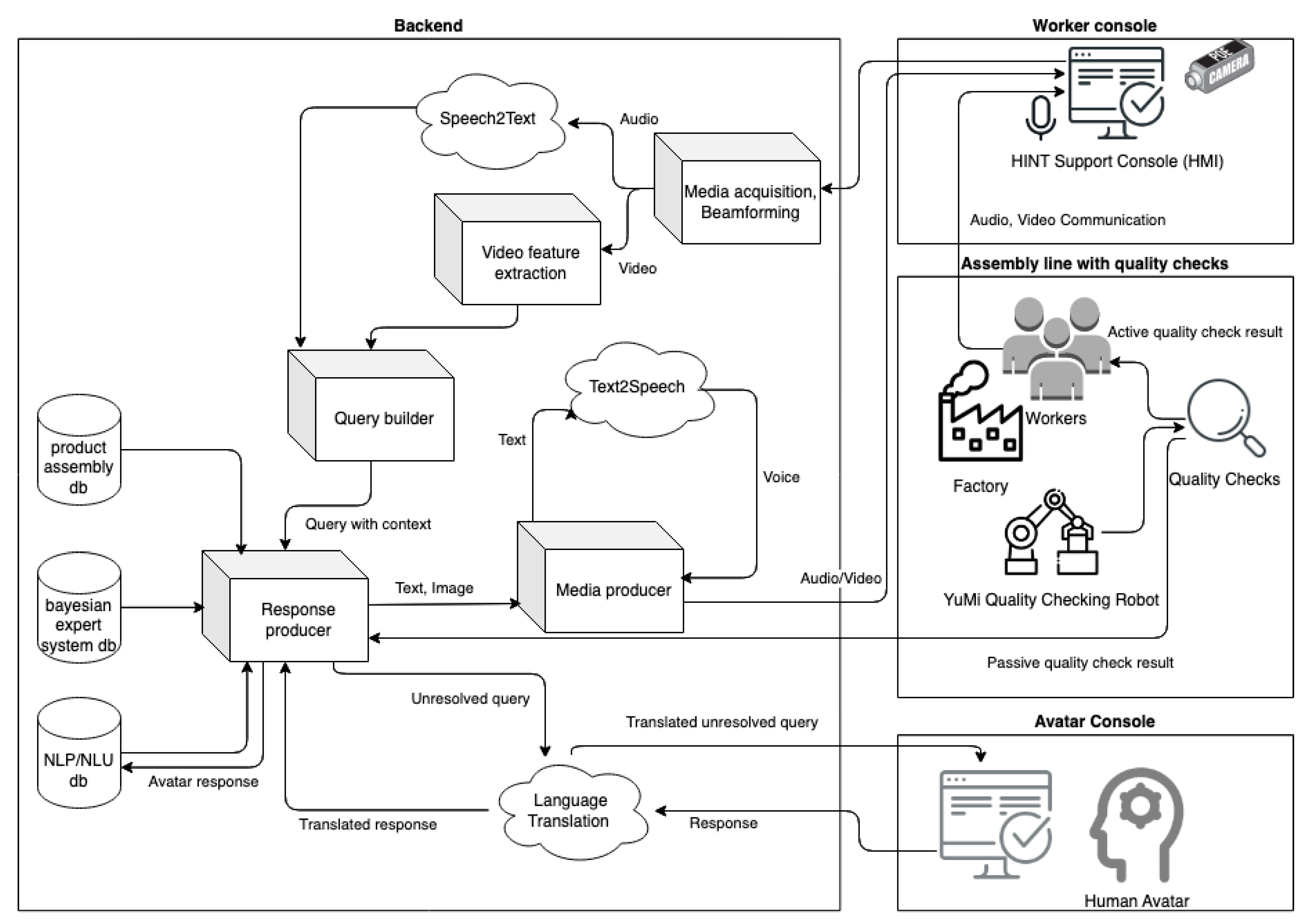
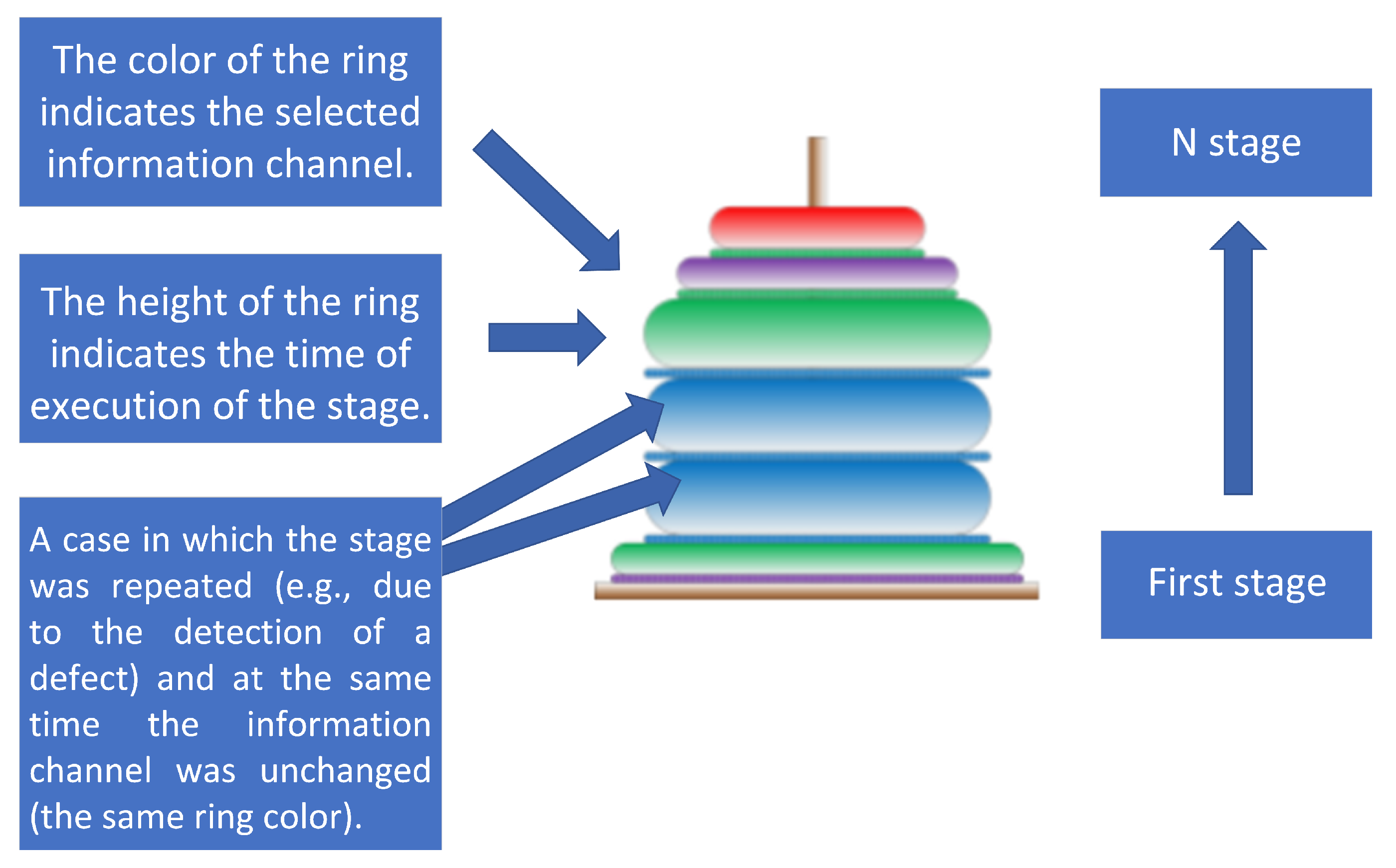
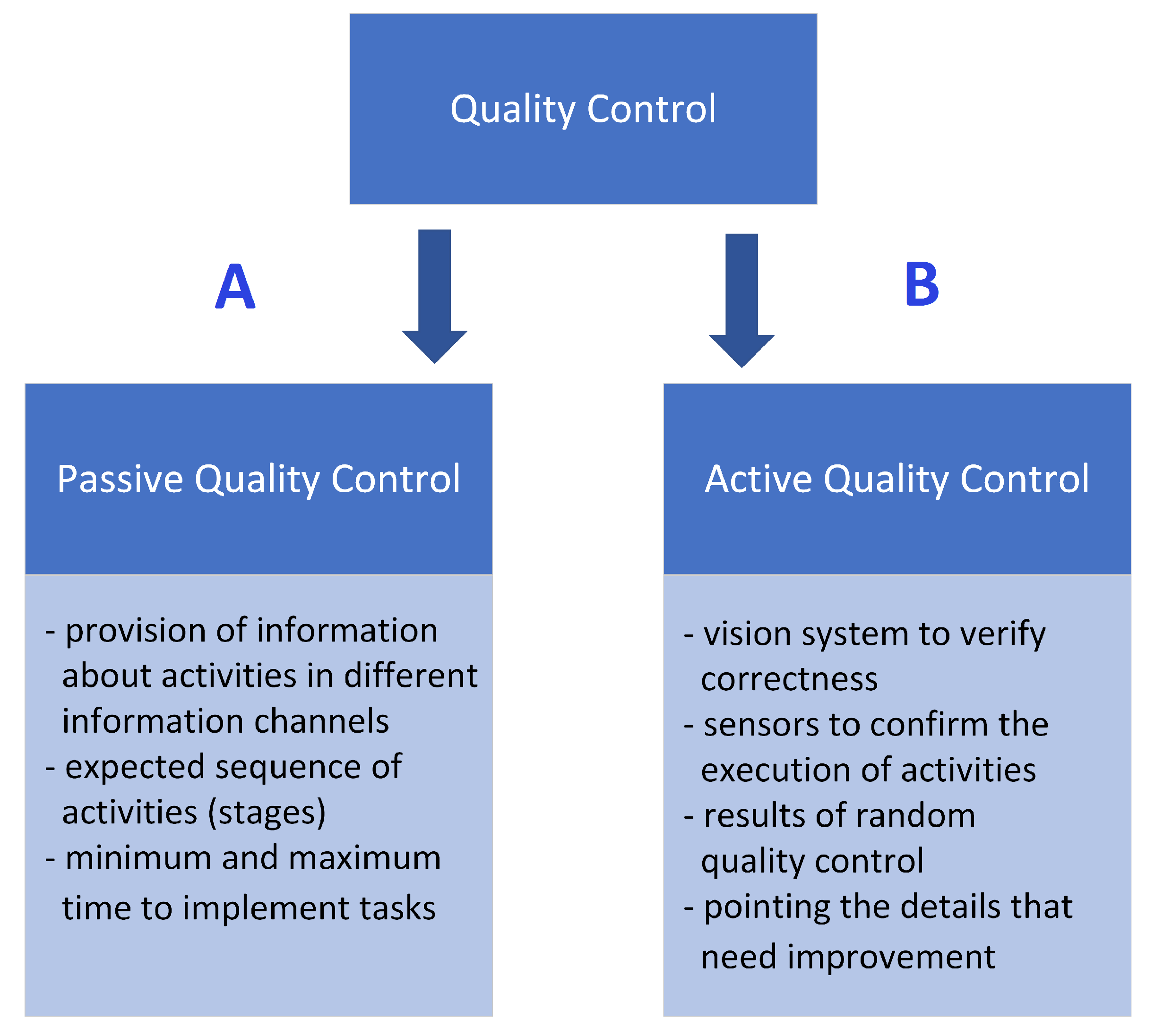
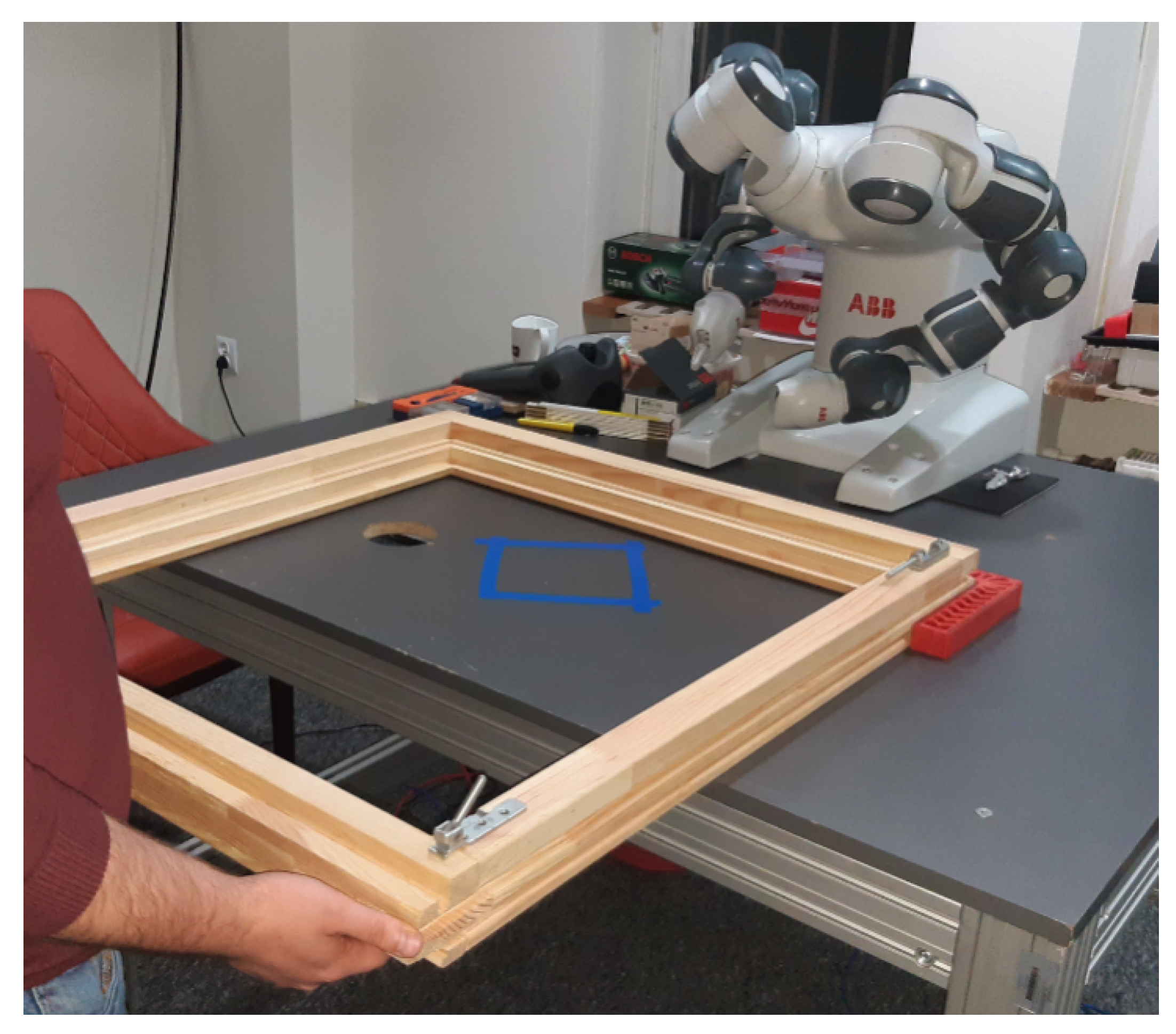


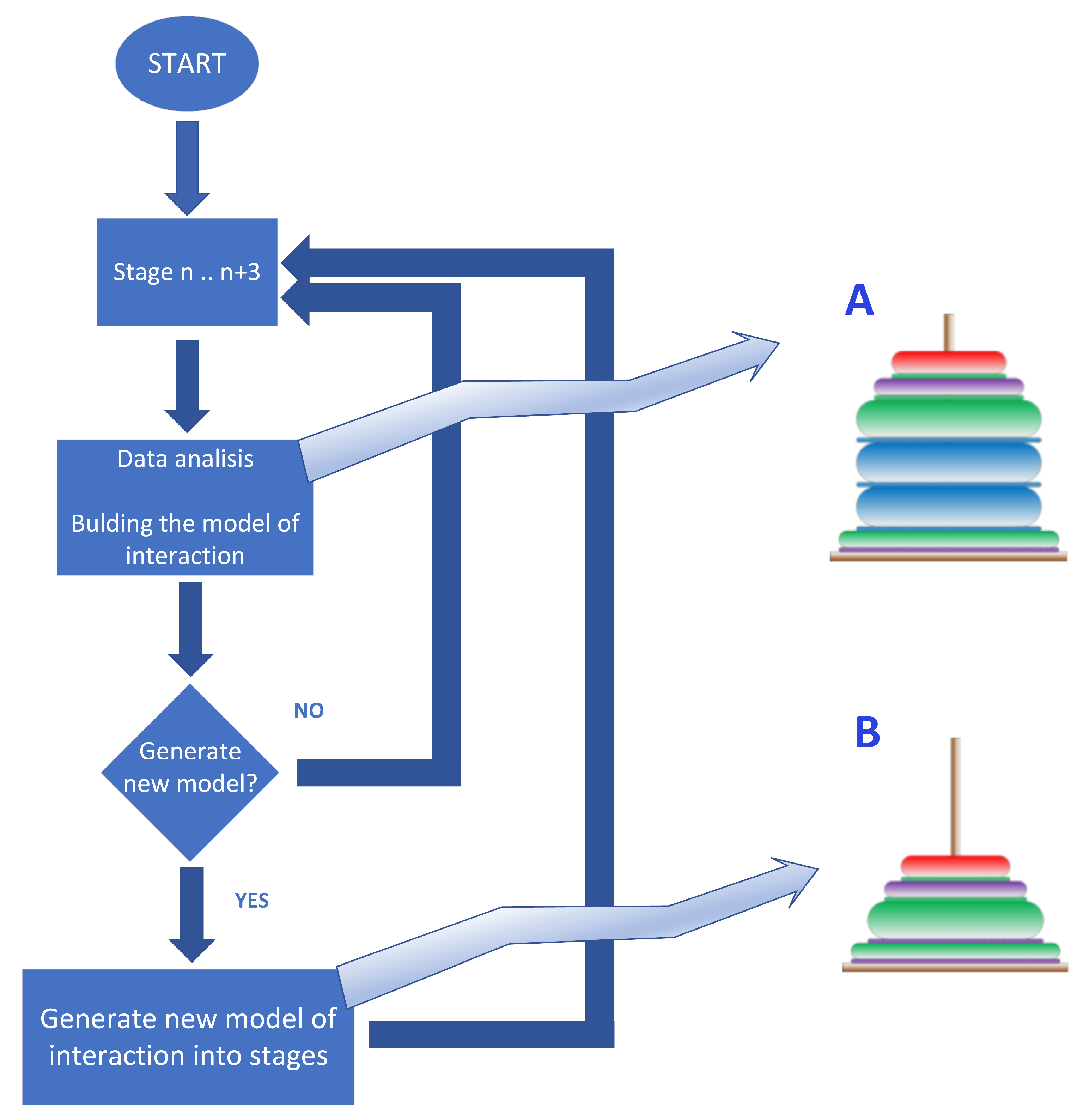
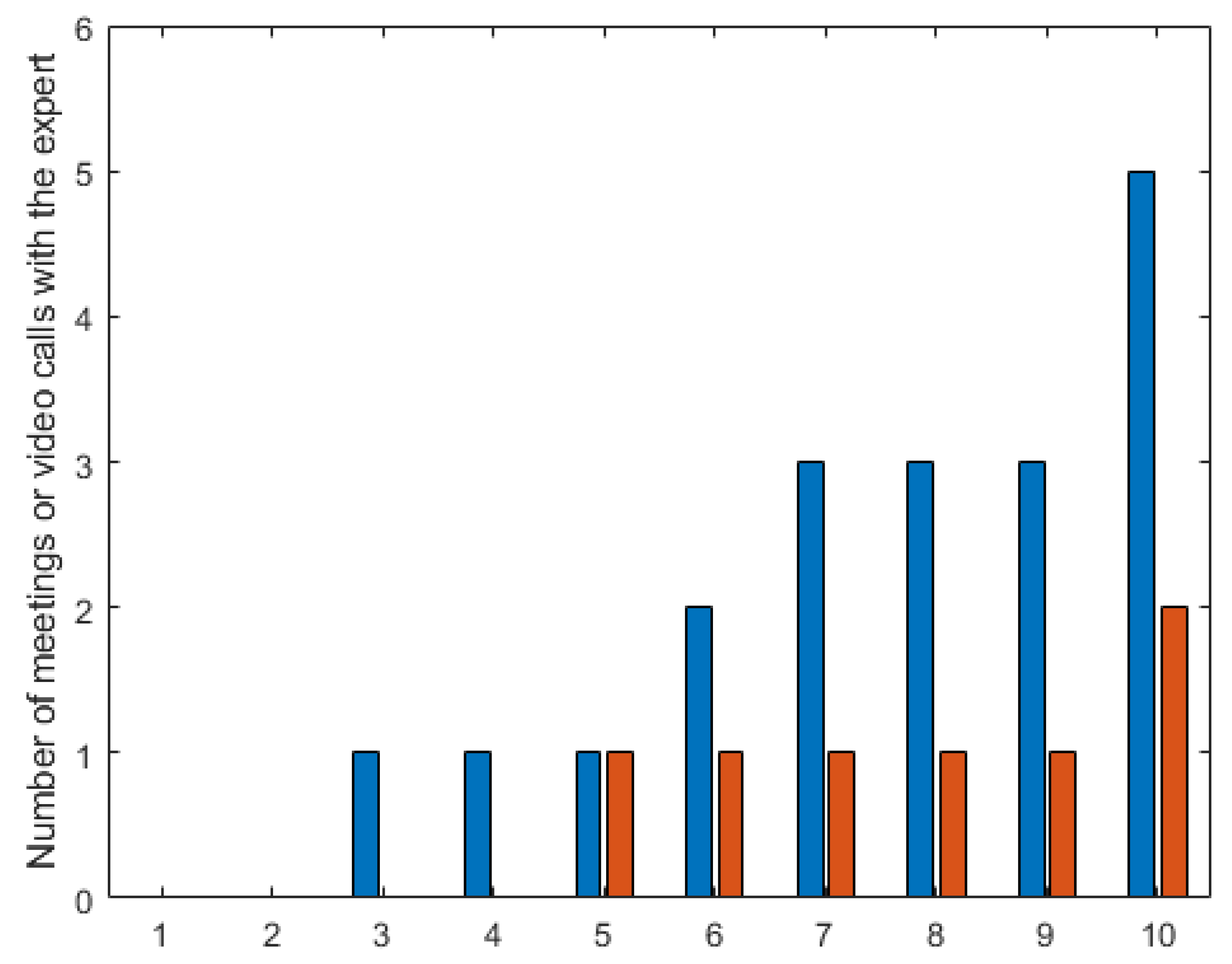
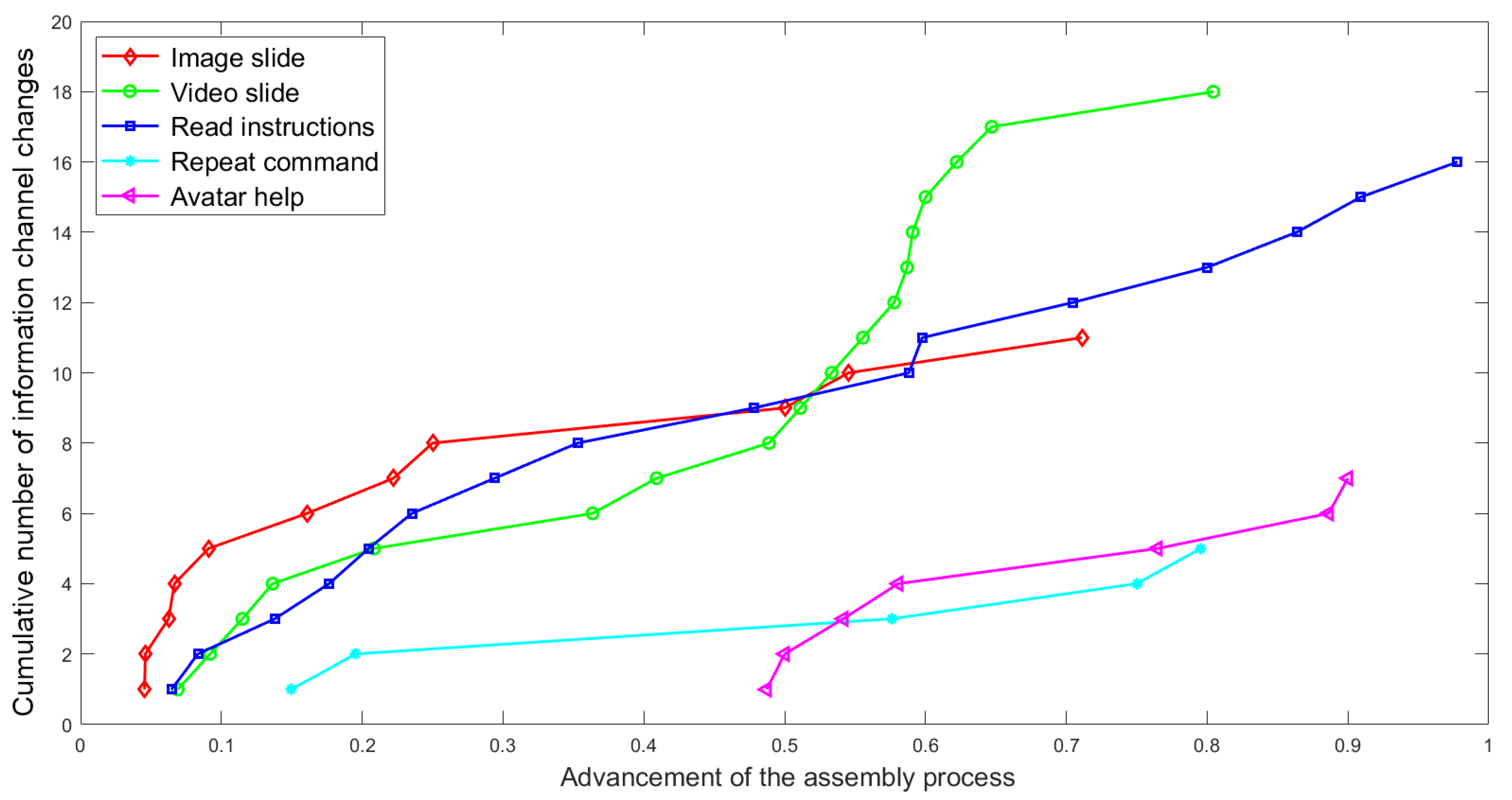
| Participant | Images (Graphical) [No. of Uses] | Videos (Multimedia) [No. of Uses] | Audio (Speech) [No. of Uses] | Channel Replay [No. of Repetitions] | Avatar Teleconference [No. of Uses] |
|---|---|---|---|---|---|
| 1 | 4 | 4 | 4 | 2 | 1 |
| 2 | 0 | 0 | 1 | 0 | 2 |
| 3 | 0 | 0 | 1 | 0 | 1 |
| 4 | 2 | 3 | 2 | 2 | 0 |
| 5 | 0 | 0 | 0 | 0 | 1 |
| 6 | 0 | 1 | 5 | 0 | 1 |
| 7 | 0 | 0 | 0 | 0 | 1 |
| 8 | 0 | 2 | 1 | 1 | 0 |
| 9 | 3 | 7 | 1 | 0 | 0 |
| 10 | 2 | 1 | 1 | 0 | 0 |
Disclaimer/Publisher’s Note: The statements, opinions and data contained in all publications are solely those of the individual author(s) and contributor(s) and not of MDPI and/or the editor(s). MDPI and/or the editor(s) disclaim responsibility for any injury to people or property resulting from any ideas, methods, instructions or products referred to in the content. |
© 2023 by the authors. Licensee MDPI, Basel, Switzerland. This article is an open access article distributed under the terms and conditions of the Creative Commons Attribution (CC BY) license (https://creativecommons.org/licenses/by/4.0/).
Share and Cite
Gardecki, A.; Rut, J.; Klin, B.; Podpora, M.; Beniak, R. Implementation of a Hybrid Intelligence System Enabling the Effectiveness Assessment of Interaction Channels Use in HMI. Sensors 2023, 23, 3826. https://doi.org/10.3390/s23083826
Gardecki A, Rut J, Klin B, Podpora M, Beniak R. Implementation of a Hybrid Intelligence System Enabling the Effectiveness Assessment of Interaction Channels Use in HMI. Sensors. 2023; 23(8):3826. https://doi.org/10.3390/s23083826
Chicago/Turabian StyleGardecki, Arkadiusz, Joanna Rut, Bartlomiej Klin, Michal Podpora, and Ryszard Beniak. 2023. "Implementation of a Hybrid Intelligence System Enabling the Effectiveness Assessment of Interaction Channels Use in HMI" Sensors 23, no. 8: 3826. https://doi.org/10.3390/s23083826
APA StyleGardecki, A., Rut, J., Klin, B., Podpora, M., & Beniak, R. (2023). Implementation of a Hybrid Intelligence System Enabling the Effectiveness Assessment of Interaction Channels Use in HMI. Sensors, 23(8), 3826. https://doi.org/10.3390/s23083826










